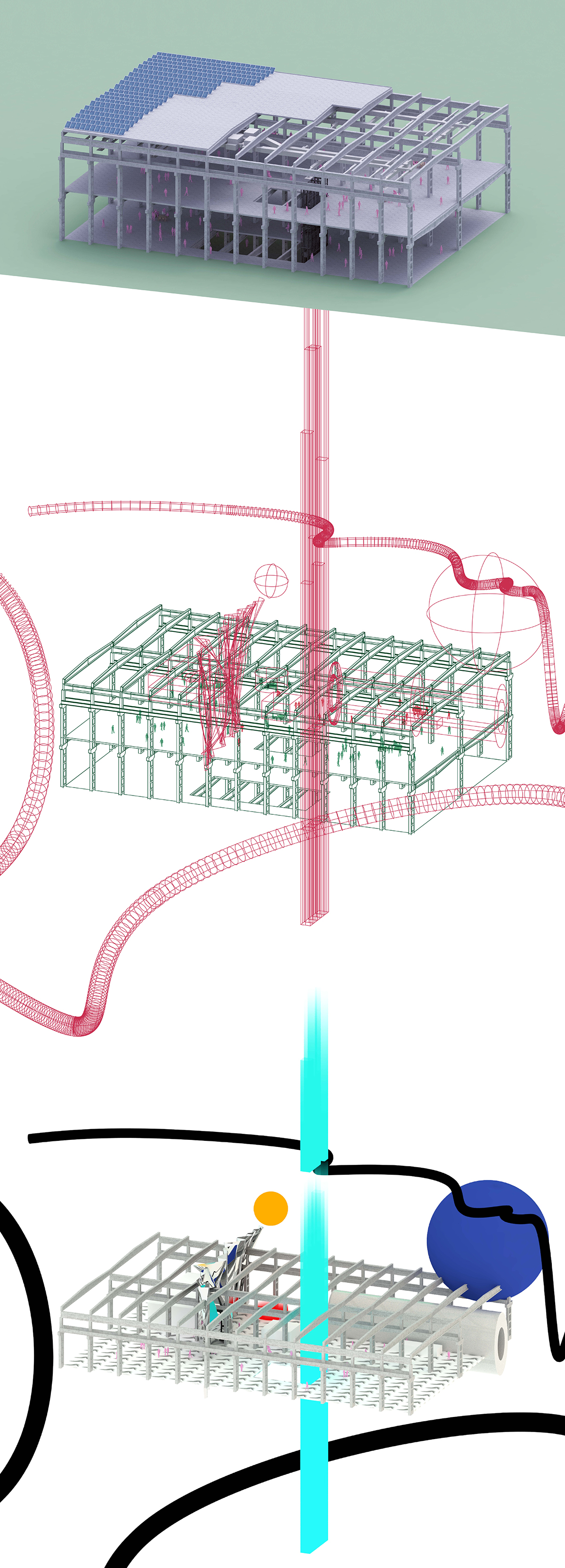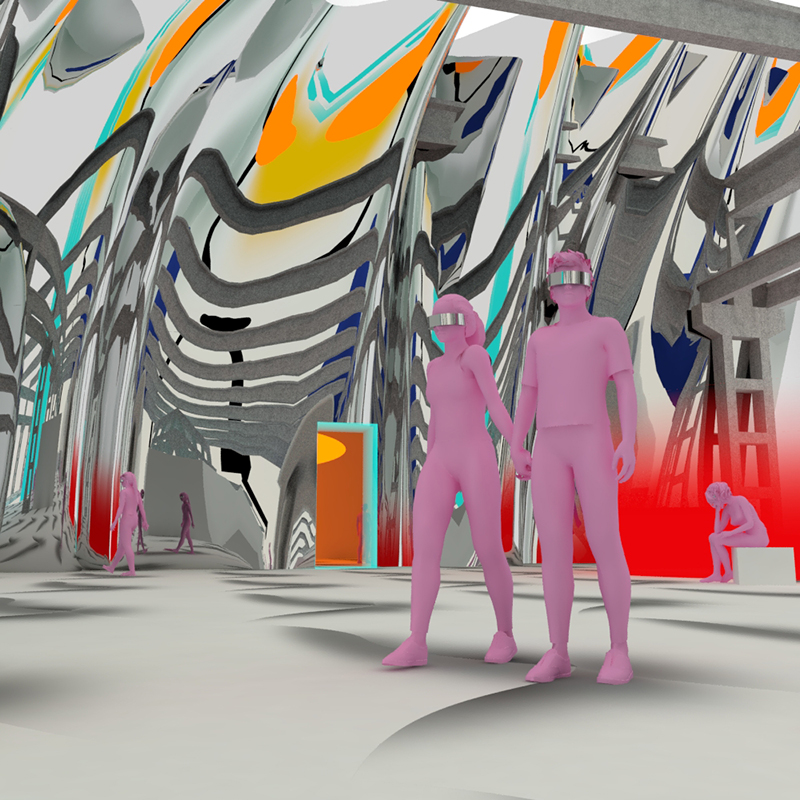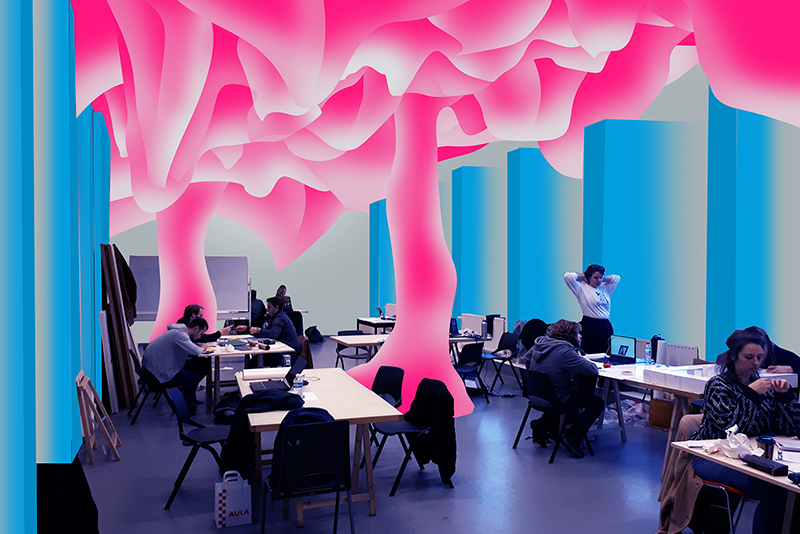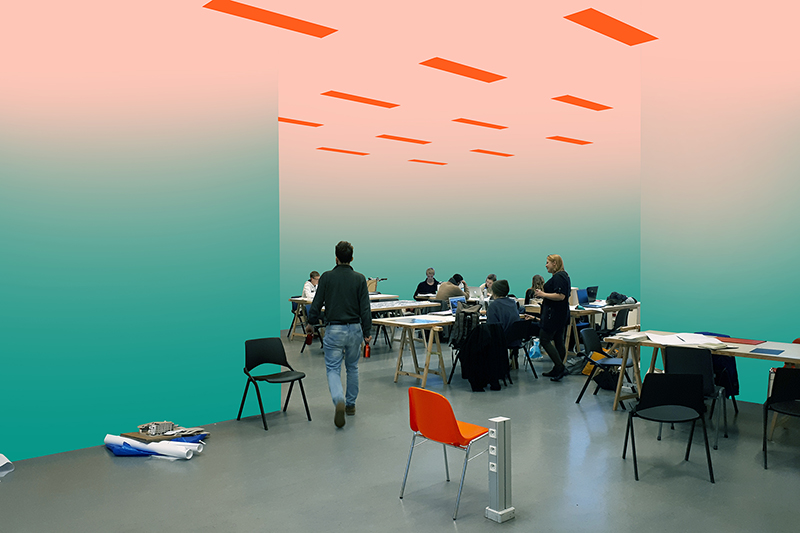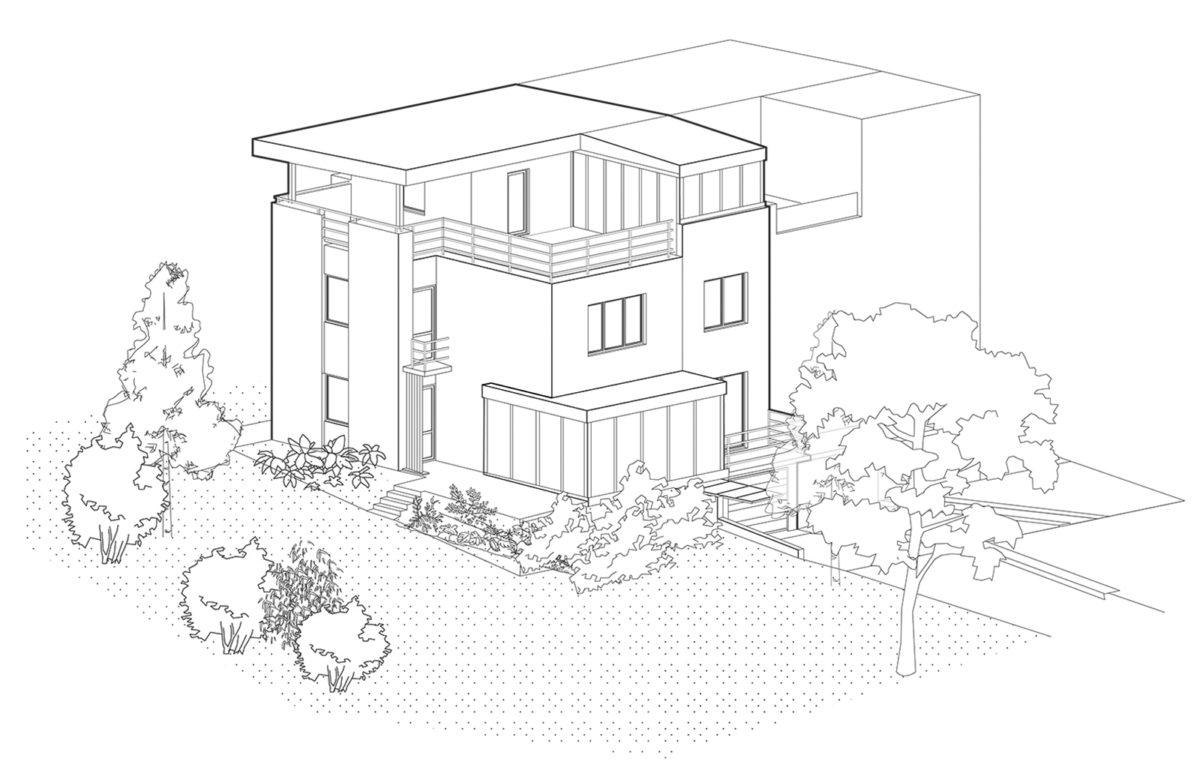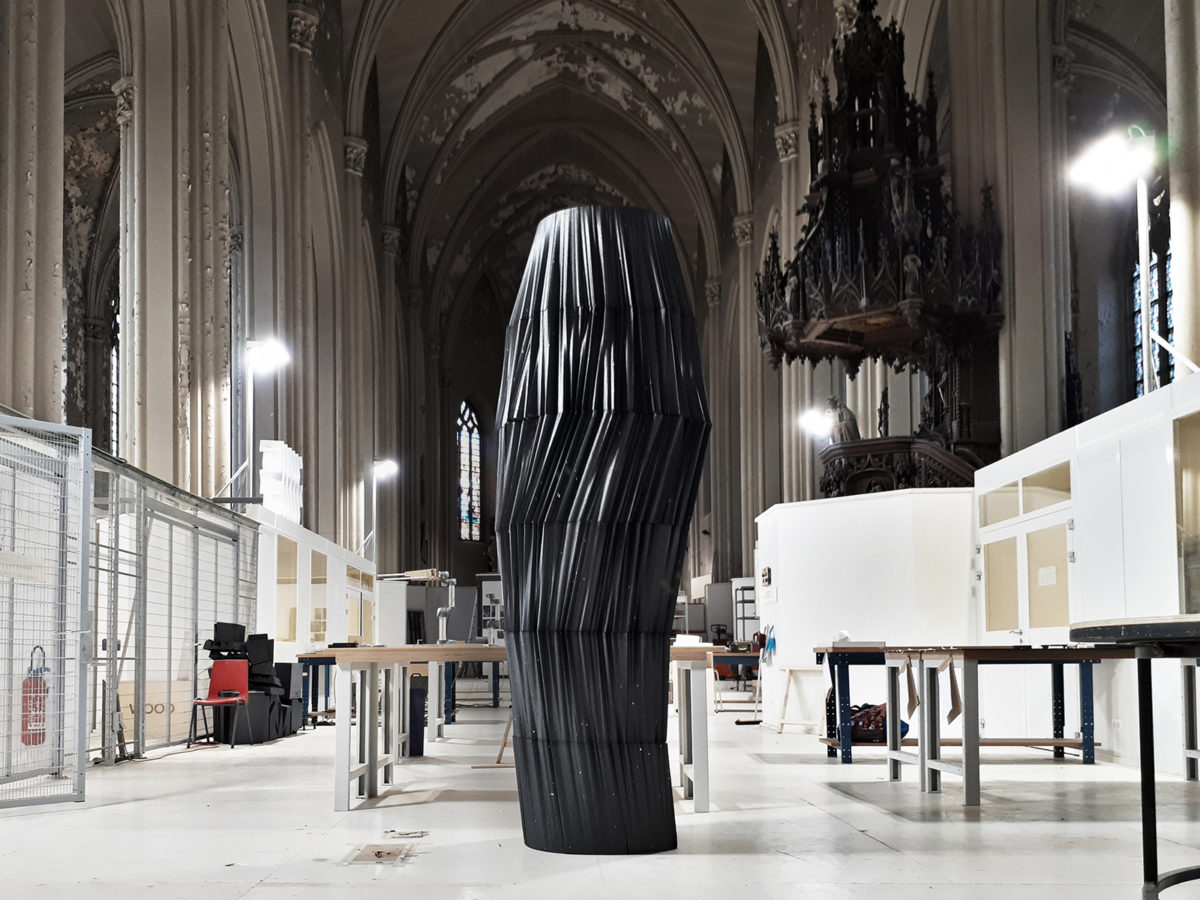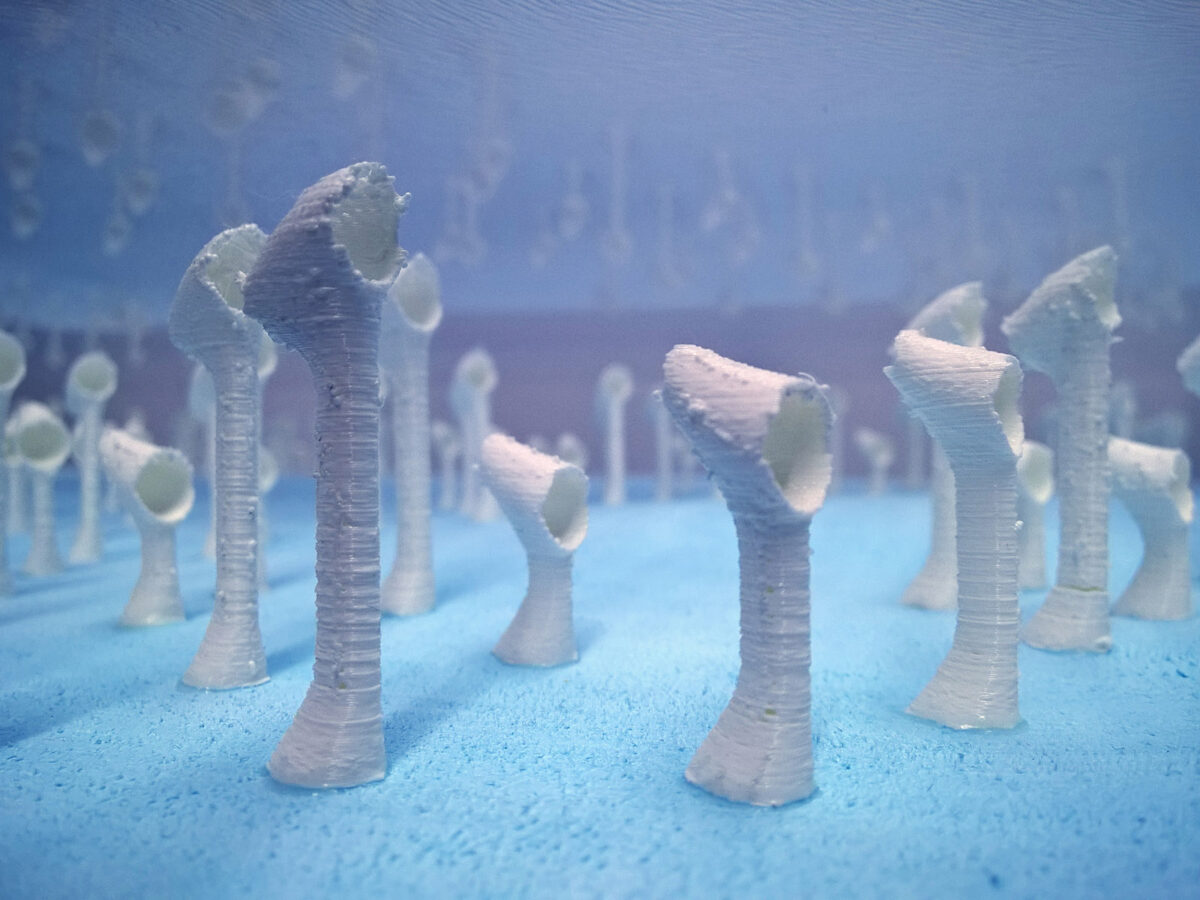Rapid advancement in technology enabled access to another layer of our world called virtual reality. Almost everybody is living part of their lives in digital environment of the internet. Whether it is communication, searching for information, buying goods from distant countries or creating virtual alter egos on social networks.
Yet we still perceive virtuality and reality as two separate worlds although they are deeply connected. Also in architecture when we speak about virtual space it usually serves just as a presentation tool of a design or it is an artificial environment of some game completely cut off from the physicality. Nevertheless both of the environments overlap themselves and interact between each other. People can experience two merging environments at once. If we start to think about it in this way we can discover whole new spectre of spatial experience. Virtuality built up on real base can enrich our spatial perception of architecture. Rather than imitate, virtuality should explore white spots on the map of architecture and create space which is impossible to construct in reality.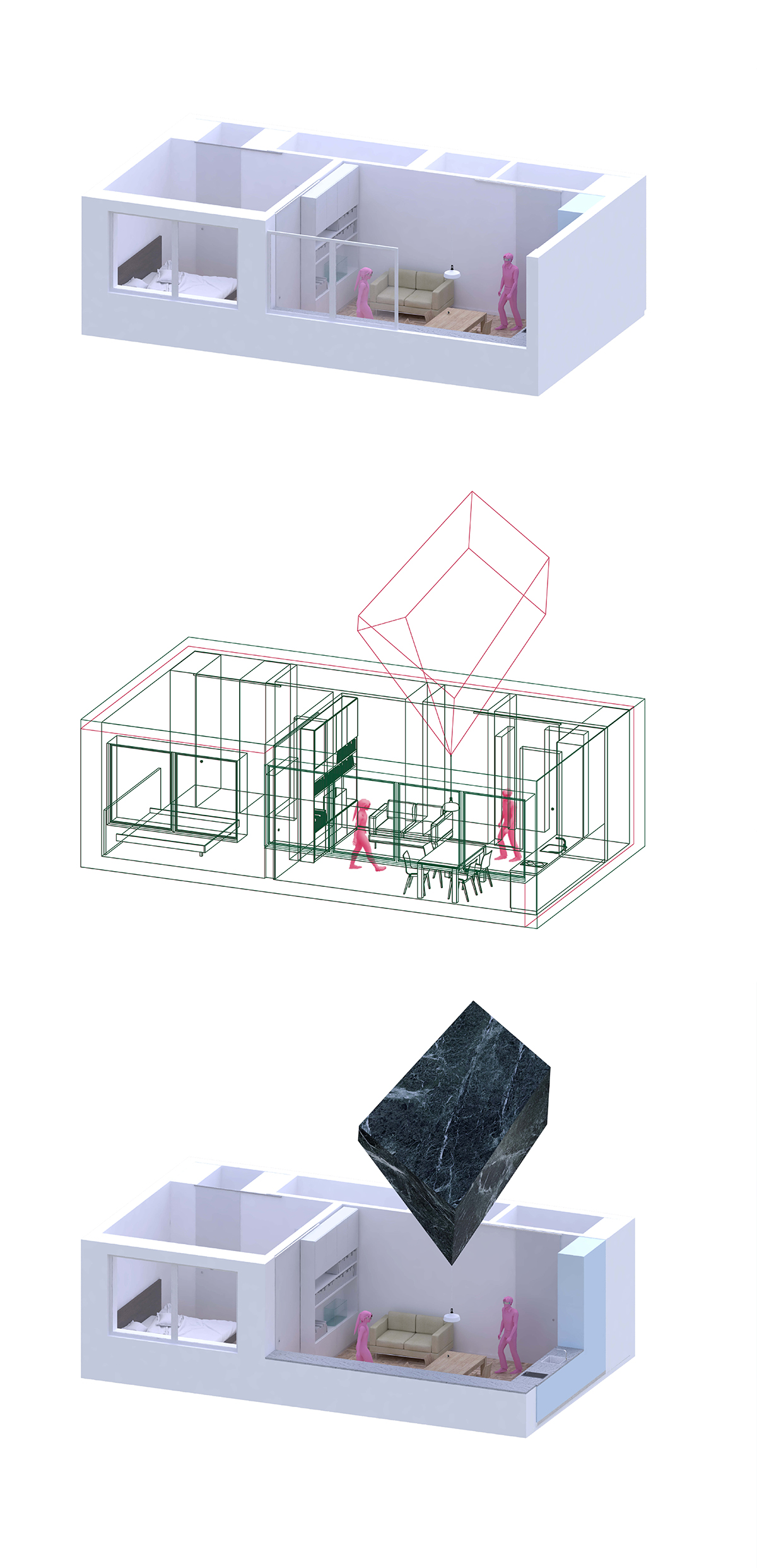 Virtuality is not bounded by physical laws such as gravity therefore it opens up new possibilities of composition or movement of objects. Virtuality also doesn’t have any mass really. Built up from pixels like matter from atoms, the virtual object can be entered and seen from inside. This constant presence of two sides of the object is thought-provoking. On one hand virtuality can create visual division of space only and not physical but on the other hand we can achieve layering of spaces because any volume can be entered.
Virtuality is not bounded by physical laws such as gravity therefore it opens up new possibilities of composition or movement of objects. Virtuality also doesn’t have any mass really. Built up from pixels like matter from atoms, the virtual object can be entered and seen from inside. This constant presence of two sides of the object is thought-provoking. On one hand virtuality can create visual division of space only and not physical but on the other hand we can achieve layering of spaces because any volume can be entered.
Human body and mind are still only existing in the real world so when we speak about virtuality, its connection with reality is inevitable. Tangibility is crucial difference between these two environments and precise overlaps of virtual and real will make virtuality convincing.
Virtuality can be perceived through man made devices only (or body extensions in the future). People can always choose not to perceive the virtual part of the space so the real one has to be also functional on its own. Furthermore perception can vary from person to person. Two individuals in the same physical space can see different virtual space. While in some situations it is required that they perceive identical virtual environment.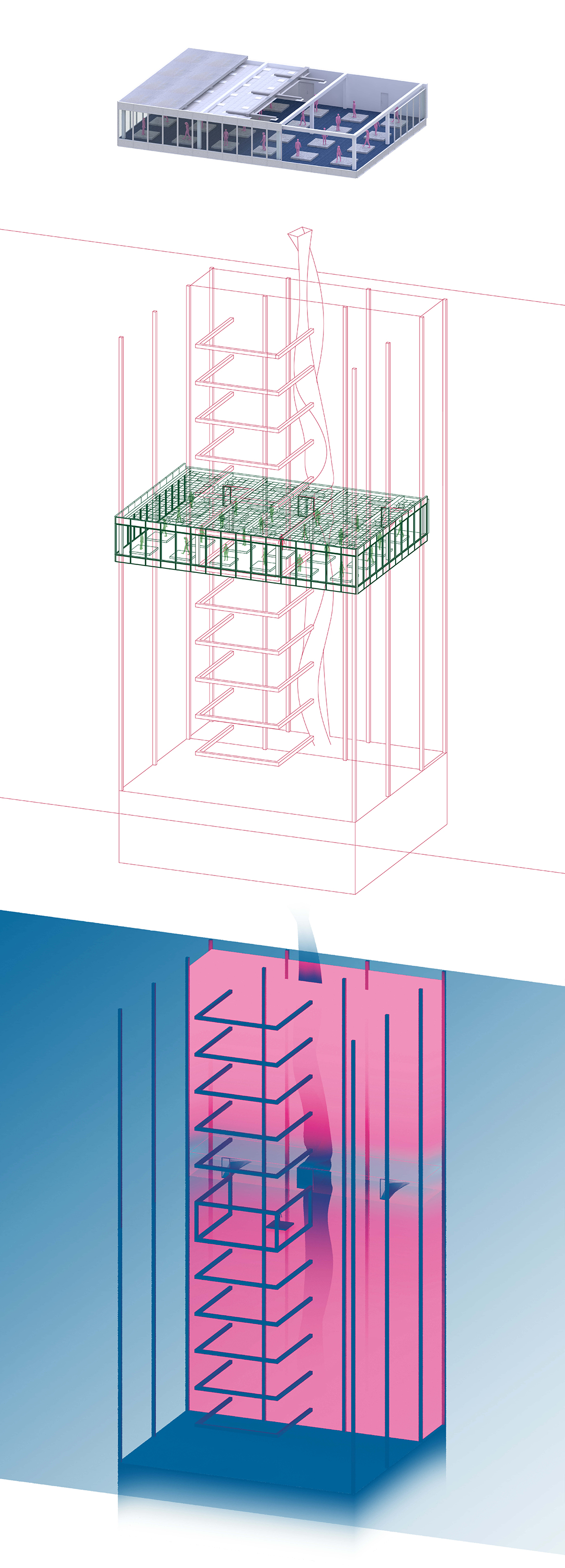 Creative potential is vast…
Creative potential is vast…
New materials tend to be related with graphic design and painting.
Architectural composition overlaps with installation art.
The temptation to overwhelm or to erase is strong.
A lot can be created in virtual space without many resources spent. Expenses expressed in manufacturing costs may be perhaps shifted to computational power required for rendering the image.
It is important not to simulate but to create; at first the primary focus might be just extension of architecture but virtuality could later be seen as its integral part which would even influence behavior of people.
